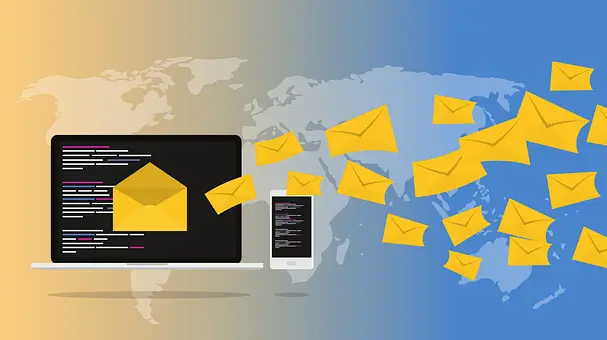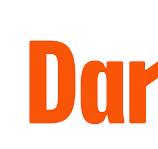Distributed sending in a marketing cloud is a solution where your headquarters can provide the content and data for the local marketers. Local marketers use the content and data to send targeted email messages to their subscribers. This allows for more personalized emails that are relevant to each subscriber.
The headquarters can provide local marketers with content and data in Marketing Cloud. This allows for more personalized emails that are relevant to each subscriber. The distributed sending feature is useful if you want your HQ team or someone else in a different location (such as an agency) to be able to create email campaigns without having access directly to your Marketing Cloud instance.
What is a distributed marketing model?
A distributed marketing approach allows local businesses to use your company’s content and data to create targeted customer email communications. This allows local marketers to develop customized material relevant to their target audience, improving email campaign effectiveness.


What are the benefits of using a marketing cloud with a distributed sending model?
There are several benefits to using a marketing cloud with distributed sending capabilities. First, local businesses can create more relevant and targeted email content, which leads to improved campaign response rates. Additionally, this approach allows you to reach a larger audience by leveraging the local marketer’s customer list. Additionally, you can continue to create classic content emails within Email Studio. Finally, you can manage and monitor your email campaigns in one centralized location.
How does a distributed sending model work?
The distributed sending model allows local businesses to use your company’s content and data to create targeted customer email communications. This allows local marketers to develop customized material relevant to their target audience, improving email campaign effectiveness. The marketing cloud provides the infrastructure and tools needed to manage and monitor your email campaigns, while the local marketer provides the knowledge and expertise necessary to create effective communications.
What are some of the challenges associated with using a distributed sending model?
There are several challenges associated with using a distributed marketing model. First, managing and monitoring email campaigns from multiple locations can be difficult. Additionally, local marketers may not have the necessary skills or knowledge to create the effective email content. Finally, it can be challenging to coordinate efforts between your company and the local marketers.


How can I start using a marketing cloud with a distributed sending model?
To start using a marketing cloud with a distributed sending model, you first need to identify local businesses interested in participating in your program. Next, you’ll need to provide the necessary infrastructure and tools to manage and monitor email campaigns. Finally, you’ll need to provide training and support to the local marketers so they can create effective email content.
What are some benefits of using a marketing cloud with a distributed sending model?
There are several benefits to using a marketing cloud with distributed sending capabilities. First, local businesses can create more relevant and targeted email content, which leads to improved campaign response rates. Additionally, this approach allows you to reach a larger audience by leveraging the local marketer’s customer list. Additionally, you can continue to create classic content emails within Email Studio. Finally, you can manage and monitor your email campaigns in one centralized location.
To start using a marketing cloud with a distributed sending model, you first need to identify local businesses interested in participating in your program. Next, you’ll need to provide the necessary infrastructure and tools to manage and monitor email campaigns. Finally, you’ll need to provide training and support to the local marketers so they can create effective email content.
Who can benefit from distributed sending model?
The distributed sending model can benefit a variety of businesses. Companies with multiple locations can use the model to ensure local marketers access the same content and data. This will help to create a unified brand image across all locations. The model can also be used by companies that want to send targeted email messages to their subscribers.
Distributed sending model can be used by companies with a large number of customers. This is because the local marketers will have access to the same content as their headquarters, and they can use it to send targeted email messages to their subscribers.
Companies with multiple locations can use this model so that each location has access to the same data and content. This will help to create a unified brand image across all locations. Companies that want to send targeted email messages to their subscribers can also use this model. The local marketers will have access to the same content as the headquarters, and they can use it to send targeted email messages to their subscribers. Lastly, companies with many customers can use this model because they will access the same data and content.


How to Choose the Best Tools for Distributed Sending Model
When choosing the best tools for a distributed sending model, there are a few key factors you’ll want to consider. The first is the ability to target subscribers based on their location. This will help you ensure that each message is relevant to the recipients in that specific market. You’ll also need tools that can help you manage and track your local marketing campaigns to see how they’re performing and make adjustments as needed. Lastly, you’ll want an easy platform that provides all the features and functionality you need to create successful marketing campaigns.
When evaluating different tools, compare their capabilities with your specific needs. Some platforms may offer more features than you need or maybe too complex for your team to use. Others may be more limited in their capabilities or require higher technical expertise. By evaluating all your options and choosing the right tools for your business, you can ensure that your marketing campaigns will be successful no matter where your customers are located.
If you’re looking for a platform that can help you execute successful marketing campaigns in a distributed sending model, consider SendGrid. Our platform offers all the features and functionality to create targeted email messages that resonate with your subscribers. Our easy-to-use interface makes it simple for local marketers to get started quickly and achieve results. Contact us today to learn more about how SendGrid can help.
What is an email Studio in the marketing cloud?
The Salesforce Marketing Cloud’s Email Studio is a vital component of the system, being utilized to create and send personalized emails ranging from simple newsletters to complicated campaigns, offer promotional, transactional, and triggered messages, and measure and optimize performance.
Email Studio uses a drag-and-drop interface, templates, and wizards to make the creation process as simple as possible. Additionally, Email Studio offers powerful automation capabilities such as dynamic content insertion and conditional branching that allow you to create tailored messages for each recipient.
Finally, Email Studio provides detailed reporting on how your emails are performing so you can optimize your campaigns for the best results. If you’re looking for powerful and easy-to-use email creation and delivery solution, look no further than Email Studio in the Salesforce Marketing Cloud.





